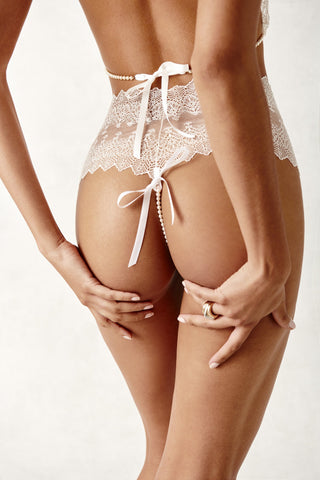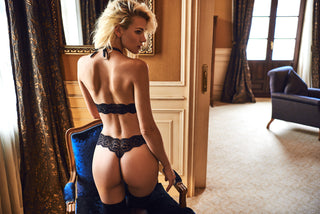Women's lingerie is more than just intimate garments; it is a key element in the history of fashion and the personal expression of femininity. The meaning of lingerie has evolved over the centuries, from its beginnings as functional garments to becoming symbols of sensuality and style.
The history of women's underwear dates back to ancient times, where women used simple fabrics to cover and protect their privacy. However, it was during the Renaissance that lingerie began to acquire more sophistication and detail, with the use of lace and embroidery.
Over time, the definition of lingerie has diversified, adapting to the trends and needs of each era. From the corsets and crinolines of the 18th century to modern bras and panties, lingerie has reflected the aesthetic and social ideals of each era.
What is lingerie?
It is more than just underwear; it is a symbol of femininity, power, and self-expression. From ancient times to the present day, lingerie has evolved, reflecting the beauty standards and gender roles of each era.
The history of women's underwear is fascinating. From the restrictive corsets of the Victorian era to the comfortable and elegant bras of today, lingerie has undergone significant changes in design and function. It has witnessed how women have challenged social norms, seeking comfort and autonomy.
The meaning of lingerie goes beyond its practical function. It is a tool for self-expression and confidence. From the subtlety of silk to the sensuality of lace, lingerie allows women to showcase their personal style and feel secure in themselves.
The definition of lingerie includes a wide range of garments, from bras and panties to nightgowns and corsets. Each piece is carefully designed with a variety of materials, colors, and styles to suit individual preferences.
Furthermore, history reflects the evolution of fashion and women's emancipation, combining functionality and style in a unique way. From everyday comfort to sensuality on special occasions, lingerie remains an integral part of women's lives, celebrating their beauty and authenticity.
History of lingerie
Since time immemorial, women's lingerie has been much more than simple intimate garments; it has encapsulated the very essence of femininity, flirtation, and cultural evolution. To truly understand what women's lingerie is and its significance, it is crucial to delve into its fascinating history.
What is lingerie? At its essence, lingerie refers to underwear and other intimate garments designed for women. However, its meaning goes beyond mere functionality. Lingerie embodies sensuality, delicacy, and the power of femininity.
The history of women's underwear dates back to ancient civilizations, where women used rudimentary garments to protect and enhance their figure. From Roman tunics to Renaissance corsets, lingerie has been a constant in fashion throughout the centuries.
The meaning of lingerie has evolved alongside society. In the past, lingerie was seen as a symbol of status and wealth, reserved for the elite. However, over time, access to lingerie was democratized, becoming a personal expression and an instrument of empowerment for women of all social classes.
The definition of lingerie has expanded to include a wide range of garments, from bras and panties to corsets and nightgowns. Each piece is designed with attention to detail, using luxurious materials and sophisticated tailoring techniques.
The history of underwear is marked by significant milestones, such as the invention of the modern bra in the 19th century by French designer Herminie Cadolle, or the lingerie revolution in the 1960s with the popularization of wire-free bras and more comfortable, liberating garments.
When did the bra appear?
Although there is debate about who invented the modern bra, it is believed that the earliest version emerged in the late 19th century. Instead of uncomfortable corsets and stays, the bra offered lighter, more comfortable support, allowing women greater freedom of movement.
From its modest beginnings, the bra has undergone numerous transformations. In the 1920s, with the arrival of flapper fashion, bras began to be tighter-fitting and more youthful in style. In the 1950s, influenced by Hollywood, molded cup bras with underwires emerged, providing greater definition and lift.
Today, lingerie is much more than a simple intimate garment. It has become a fashion statement in its own right, with a wide variety of styles, materials, and designs that cater to every woman's preferences. From delicate lace pieces to high-performance sports bras, lingerie offers options for every occasion and need.
Lingerie today
Today, lingerie continues to evolve with the introduction of new trends and materials. One of the most surprising innovations is pearl lingerie, a perfect fusion of elegance and sensuality. These exquisite garments are adorned with delicate pearls that add a touch of luxury and sophistication.
Additionally, in Bracli, lingerie stands out as a superior stimulating reinforcement. Generating an unparalleled intimate experience, unable to be compared with other garments.
In an increasingly self-expression and female empowerment-focused world, lingerie plays a crucial role. Not only does it offer comfort and support, but it also allows women to express their individuality and personal style. Whether it's a sensual lace set or a basic piece for everyday wear, lingerie remains an indispensable part of any woman's wardrobe.



